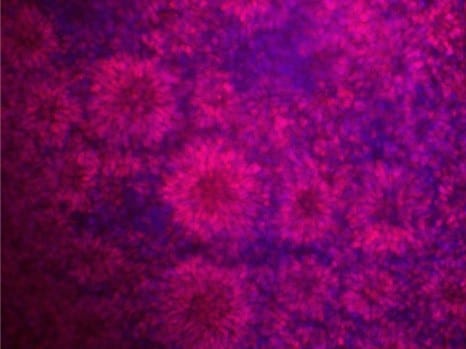
While it is already possible to obtain in vitro pluripotent cells (ie, cells capable of generating all tissues of an embryo) from any cell type, researchers from Maria-Elena Torres-Padilla’s team have pushed the limits of science even further.
These results provide new elements for the understanding of pluripotency and could increase the efficiency of reprogramming somatic cells to be used for applications in regenerative medicine.
They managed to obtain totipotent cells with the same characteristics as those of the earliest embryonic stages and with even more interesting properties. Obtained in collaboration with Juanma Vaquerizas from the Max Planck Institute for Molecular Biomedicine (Münster, Germany), these results are published on 3rd of August in the journal Nature Structural & Molecular Biology.
Just after fertilization, when the embryo is comprised of only 1 or 2 cells, cells are “totipotent“, that is to say, capable of producing an entire embryo as well as the placenta and umbilical cord that accompany it. During the subsequent rounds of cell division, cells rapidly lose this plasticity and become “pluripotent”. At the blastocyst stage (about thirty cells), the so-called “embryonic stem cells” can differentiate into any tissue, although they alone cannot give birth to a foetus anymore. Pluripotent cells then continue to specialise and form the various tissues of the body through a process called cellular differentiation.
For some years, it has been possible to re-programme differentiated cells into pluripotent ones, but not into totipotent cells. Now, the team of Maria-Elena Torres-Padilla has studied the characteristics of totipotent cells of the embryo and found factors capable of inducing a totipotent-like state.
Read more: From pluripotency to totipotency
The Latest on: Totipotency
[google_news title=”” keyword=”totipotency” num_posts=”10″ blurb_length=”0″ show_thumb=”left”]
via Google News
The Latest on: Totipotency
- Cuttings: How to reproduce the plants we have at homeon April 17, 2024 at 1:50 pm
Anyone can do it, as the steps are fairly simple; indoor plants, like the pothos, the polka dot begonia and the Swiss cheese plant are perfect for learning this technique ...
- Stem cell pluripotency and transcription factor Oct4on February 19, 2024 at 2:05 pm
Totipotency, a term most likely used for the first time in 1909, refers to the capacity of a portion of an organism to generate or regenerate an entire new organism 1. In higher mammals ...
- Recycled “junk”: the viral protein essential in early embryonic developmenton January 30, 2024 at 4:00 pm
The first step of this restriction is the transition from totipotency to pluripotency. This reflects the loss of the ability of stem cells to differentiate into any cell type, including types that ...
- Tingfeng Guo, PhDon May 24, 2023 at 10:13 pm
With a combination of his extensive background in biochemistry and genetics, he is delving into the genetic intricacies of totipotency and aims to illuminate the intricate connections between genetic ...
- Stem cell researchon October 11, 2022 at 3:49 am
In 1885, Hans Driesch showed that both cells of a two-cell sea urchin embryo are able to develop into a complete sea urchin, demonstrating the totipotency of these cells. Pluripotency of vertebrates ...
via Bing News










